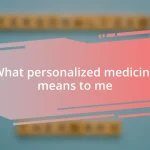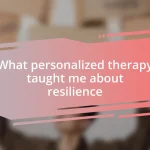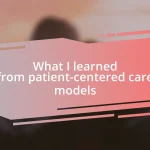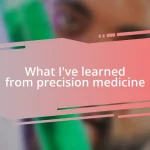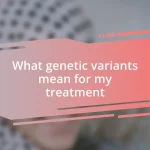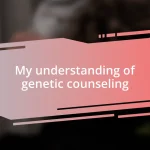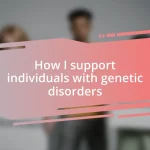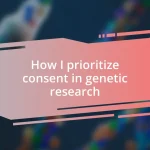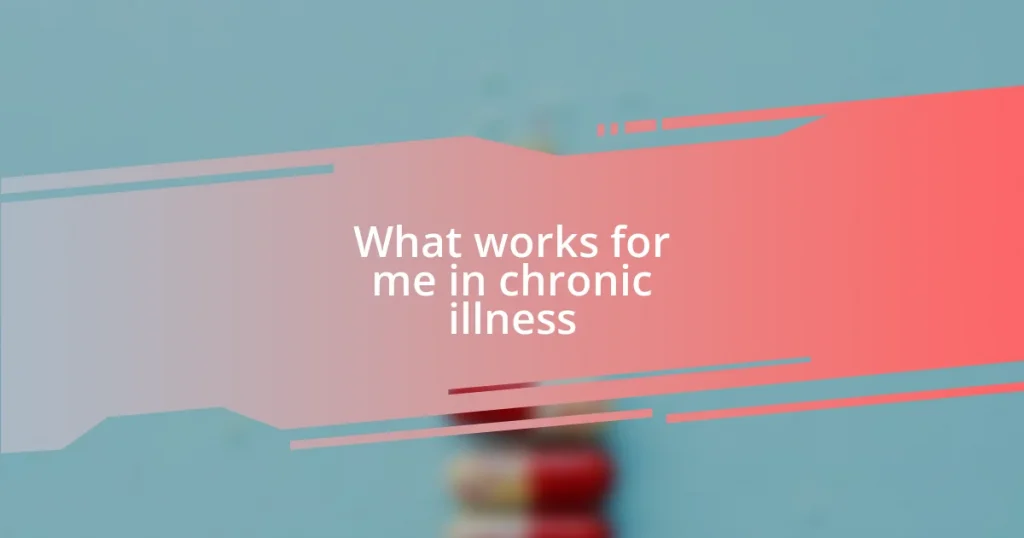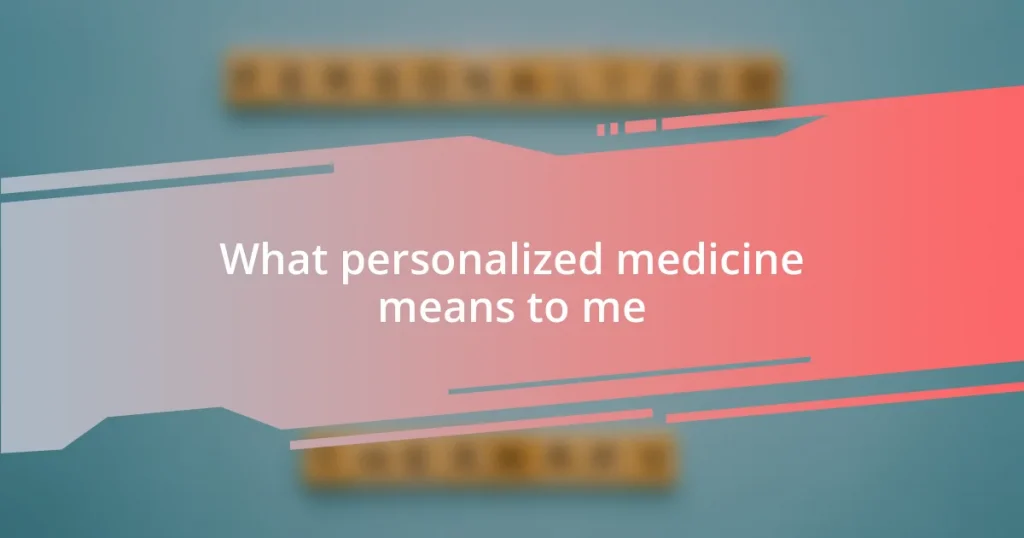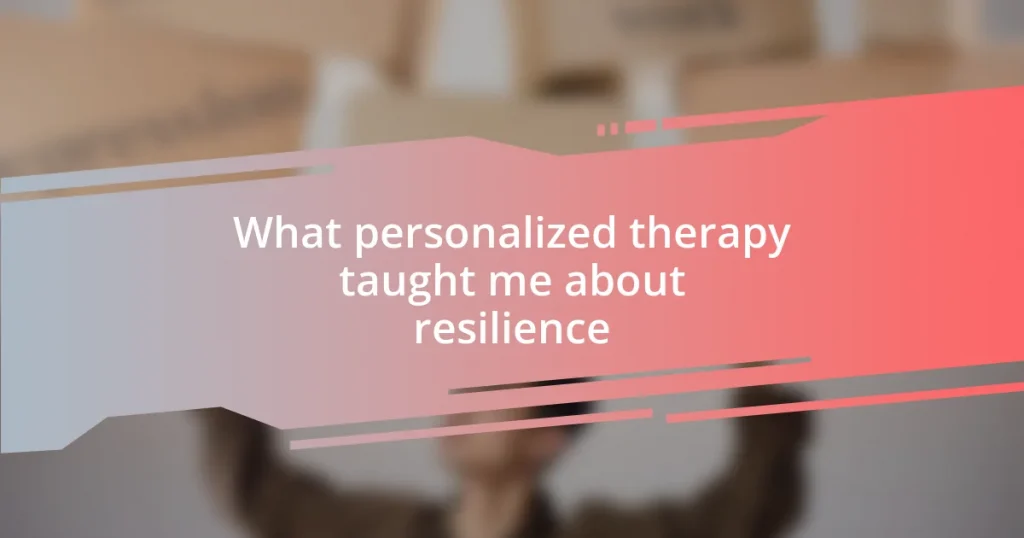Key takeaways:
- Understanding and preparing for a child’s genetic diagnosis involves emotional resilience, knowledge gathering, and community support.
- Navigating prenatal genetic testing provides crucial information that aids in planning for the future, emphasizing the balance between knowledge and emotional preparedness.
- Effective advocacy in health and education requires collaboration with professionals, informed communication, and community building to support the child’s unique needs.
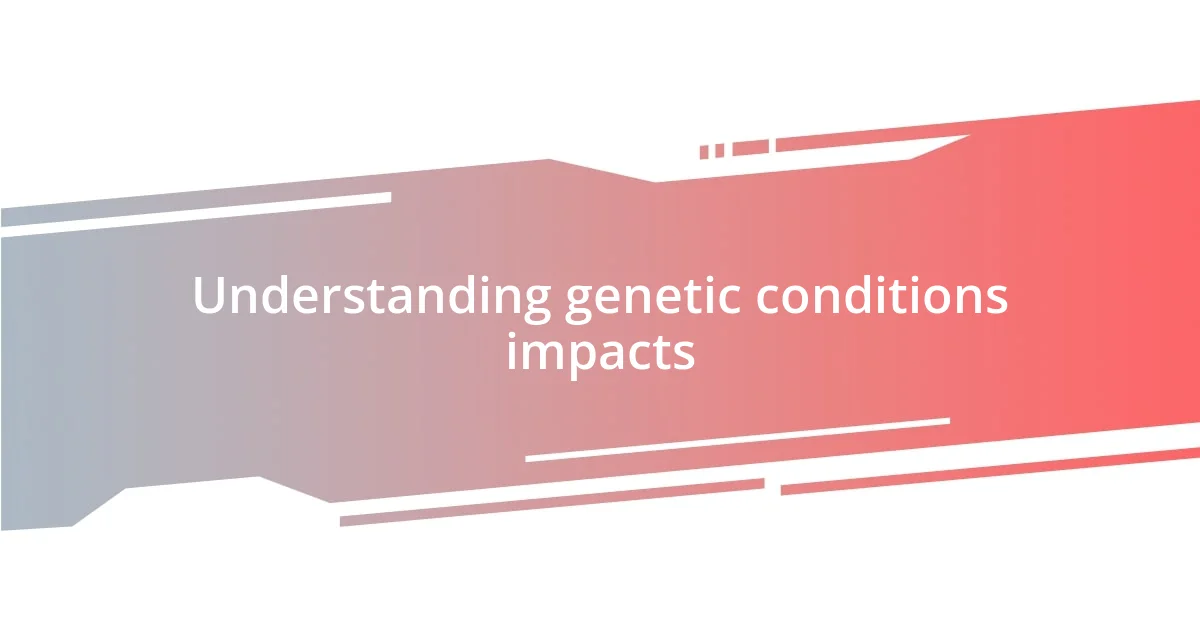
Understanding genetic conditions impacts
Understanding the impact of genetic conditions is crucial for any parent navigating this journey. I remember the moment I first encountered the diagnosis of my child’s genetic condition; a mix of fear, confusion, and a profound sense of responsibility washed over me. How do we support our children while grappling with our own emotions?
Genetic conditions can ripple through every aspect of family life. I witnessed this firsthand when simple outings transformed into strategic planning sessions, ensuring all necessary accommodations were in place. It made me question—how can we better advocate for our child’s needs while fostering an environment of joy and normalcy?
The emotional toll is immense and often underestimated. There are days filled with hope, but there are also moments when despair sneaks in, reminding me of dreams that might shift or change. But through it all, I’ve learned to channel those feelings into a deeper understanding of resilience—not just for my child, but for our entire family. How do we define strength in the face of uncertainty? For me, it’s found in the love and unity we build together.
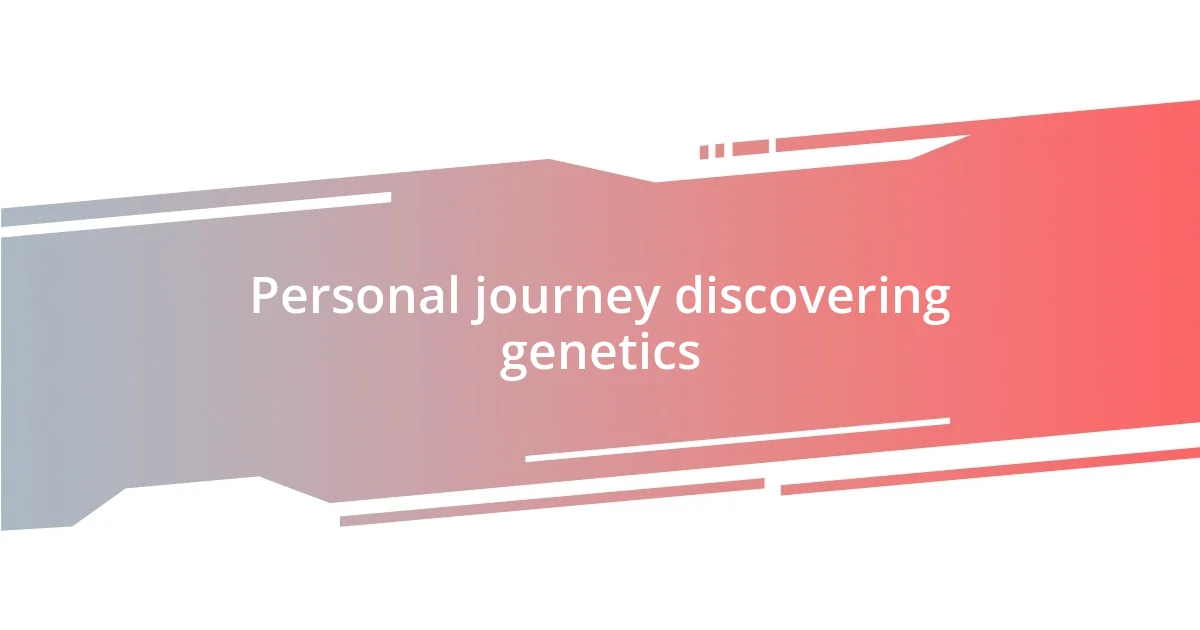
Personal journey discovering genetics
Discovering my child’s genetic condition was like stepping into a new world—one filled with complexities I never anticipated. I remember pouring over research late into the night, driven by an overwhelming desire to grasp what this diagnosis meant for our future. Each piece of information felt like a puzzle piece clicking into place, yet it often left me grappling with even more questions about our family’s journey ahead.
- I realized early on that genetics isn’t just a medical concept; it affects everything—schooling, social interactions, and daily routines.
- Connecting with other parents was vital; sharing stories helped demystify our experiences and offered unexpected comfort.
- I found a sense of empowerment in understanding the science behind my child’s condition, realizing knowledge is a powerful tool in advocacy.
- Navigating the healthcare system felt daunting at first, but I learned to speak up and ask the right questions, which made a world of difference.
Through this journey, I’ve discovered resilience in the intricacies of genetic understanding, often finding solace in the small victories along the way. Those moments of clarity—when something finally clicked—have become the pillars that ground me as a parent.
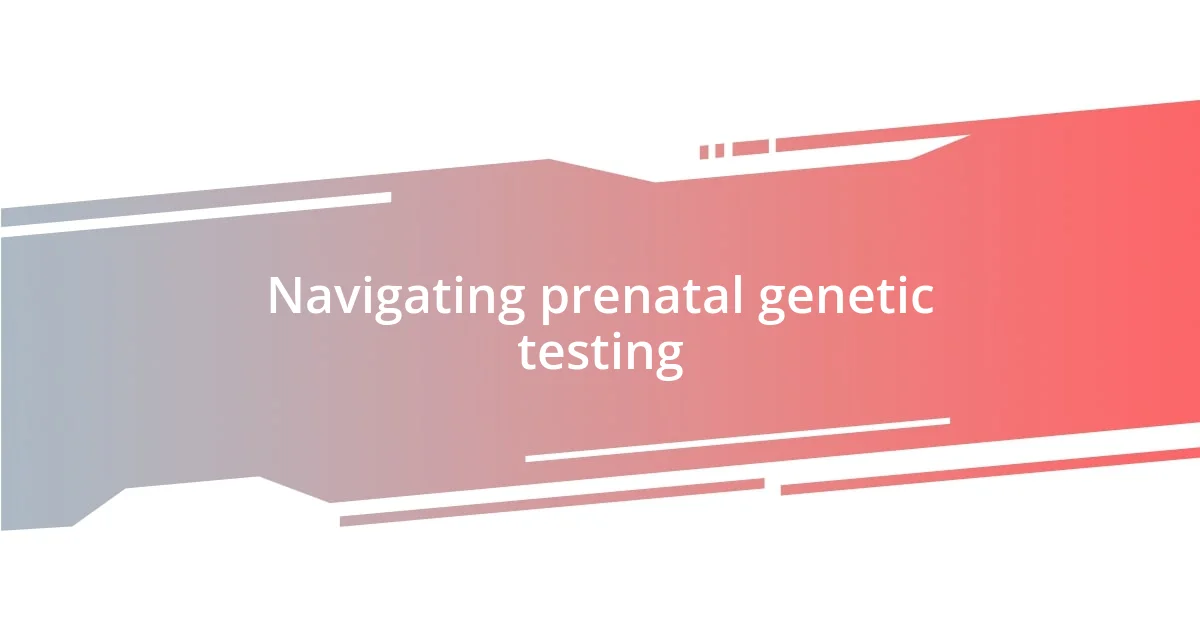
Navigating prenatal genetic testing
Navigating prenatal genetic testing was a pivotal step in my journey. I distinctly remember the mix of excitement and anxiety as we approached our first test. The idea of knowing what to expect was comforting, yet the possibility of receiving challenging news weighed heavily on my heart. In talking with other parents, I recognized we shared similar fears. How could this information shape our understanding of parenthood?
As we received results, the information felt both empowering and overwhelming. It was like opening a door to knowledge I never realized I needed. I found myself questioning every detail. Would my child face hurdles I couldn’t prepare for? This process made me appreciate the delicate balance between wanting to know everything and the weight of that knowledge. Through it all, I learned to lean on my partner and support networks, reinforcing that it’s okay to feel vulnerable during such times.
Now, with hindsight, I can see how valuable prenatal genetic testing was for our family. It allowed us to plan and seek support early on. Connecting with healthcare professionals who understood our emotions was crucial; their compassion made a world of difference. While it was challenging, this experience deepened my resolve to advocate for our child’s needs and prepared us for the unexpected.
| Type of Test | Purpose |
|---|---|
| Carrier Screening | Identifies if parents carry genes for certain genetic disorders. |
| Non-Invasive Prenatal Testing (NIPT) | Analyzes fetal DNA to assess the risk of genetic conditions. |
| Amniocentesis | Collects amniotic fluid for genetic analysis, typically done if there’s a high-risk factor. |

Preparing for a child’s diagnosis
Preparing for a child’s diagnosis can feel like standing on the edge of a vast, unexplored canyon. I remember when we first heard the words “genetic condition”; it was as if someone had flipped my world upside down. The emotions surged through me—fear, confusion, and a flicker of hope. How would this impact our day-to-day lives? The uncertainty was daunting, but I soon realized that actively preparing myself was key.
As we braced for the diagnosis, my partner and I immersed ourselves in gathering information. I recall scouring online forums late into the night, searching for parents who had traveled this same path. Their stories were both heartbreaking and inspiring. They answered questions I hadn’t even thought to ask. This sense of community helped me feel less isolated in my concerns, reminding me that others have gracefully navigated similar challenges. Could this shared wisdom be the light we needed to guide us through the fog?
Equipped with knowledge and a supportive network, I learned to approach medical professionals with confidence. Whenever I walked into a meeting, I reminded myself: I’m an advocate for my child. Preparing for a diagnosis wasn’t just about knowledge; it was about building a foundation of resilience. By asking questions and voicing my thoughts, I felt empowered. In these moments, I often pondered, why is it so crucial to have these conversations? It dawned on me that clarity—however small—can quell the chaos, and that can make all the difference in this unexpected journey.
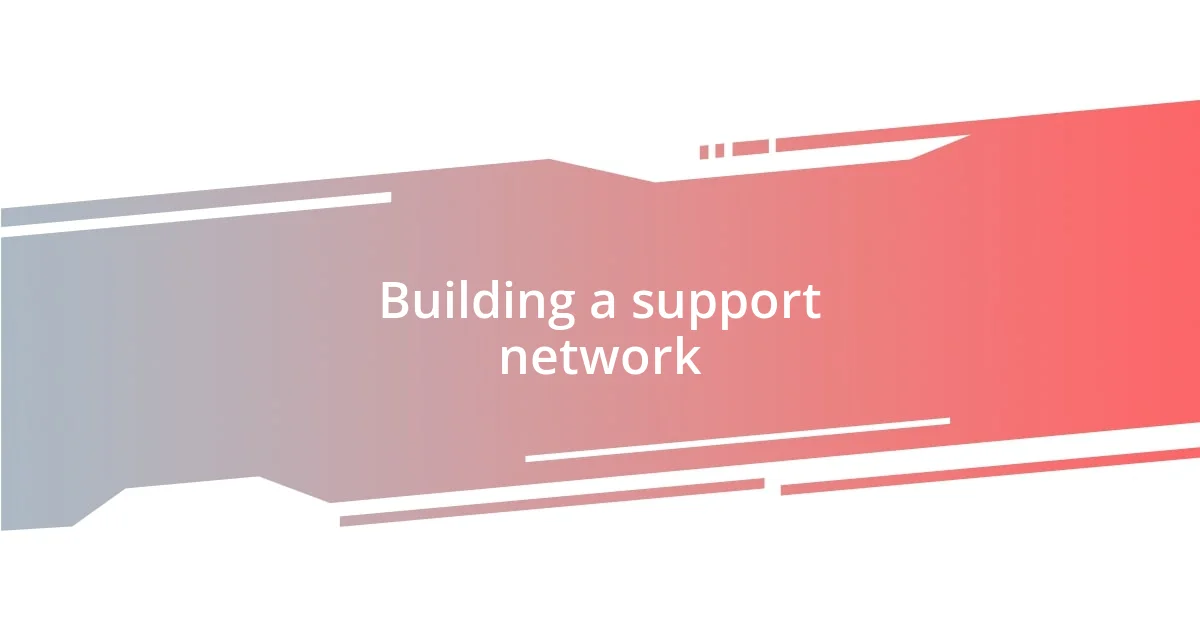
Building a support network
Building a support network was one of the most transformative parts of my journey. I still remember my first support group meeting—it was nerve-wracking to walk into a room filled with strangers. But as soon as we started sharing stories, I felt an overwhelming sense of relief. Everyone understood the unique blend of anxiety and hope we all carried. What I learned in that space was priceless; simply knowing I wasn’t alone was like a balm for my worries.
I sought out support from various sources. Online communities quickly became a lifeline. I’d scroll through posts late at night, connecting with parents who shared their personal experiences. Their courage inspired me and offered practical tips I hadn’t considered. How could I have known that reading about someone else’s struggles could provide such comfort? Those anecdotes, raw and real, helped me form a toolbox of strategies for coping with the challenges we faced.
Then, the real magic happened when I started creating relationships with other parents. I found that we could share not just fears, but also victories—little moments when our kids surprised us with their strength. For instance, one mother often spoke about how her child’s laughter in tough times reminded her of what really mattered. Those conversations helped me shift my perspective. Building a support network was less about receiving advice and more about forming genuine connections that uplifted us all during such uncertain times.
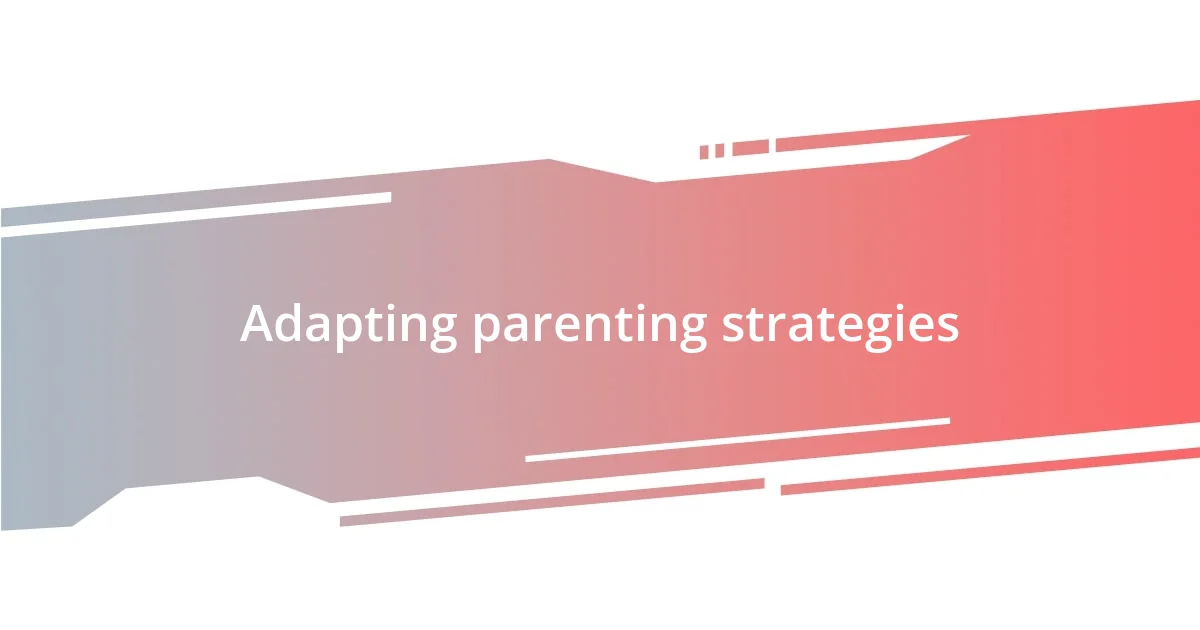
Adapting parenting strategies
Adapting my parenting strategies in response to my child’s genetic condition has been both a challenge and a revelation. I vividly recall a moment when my child struggled with a simple task that other kids found easy. Instead of feeling frustrated, I took a step back and thought, “What if I approached this differently?” This shift in mindset allowed me to create tailored activities that met my child’s unique needs and strengths—almost like designing a personalized learning experience.
I also learned the importance of flexibility in our daily routines. There were days when traditional discipline techniques just didn’t work; I found myself instead asking, “What can we learn from this moment?” Instead of focusing solely on compliance, I discovered that fostering an environment of understanding and patience was far more beneficial. Integrating play and open communication into our approach has made a significant difference. I watched my child thrive when we turned challenges into fun problem-solving sessions. Who knew that a simple game could teach resilience?
As we navigated various therapies and interventions, I had to be strategic about balancing expectations. I often found solace in reflecting on the small victories, like the first time my child expressed a thought about their condition. It sparked a delightful conversation that helped me realize my child was not defined by their diagnosis. Instead, I started embracing the idea that every adaptation we made was a step toward uncovering our family’s unique strengths. It’s a powerful reminder that parenting is a dynamic journey, shaped by love, understanding, and a willingness to adapt.
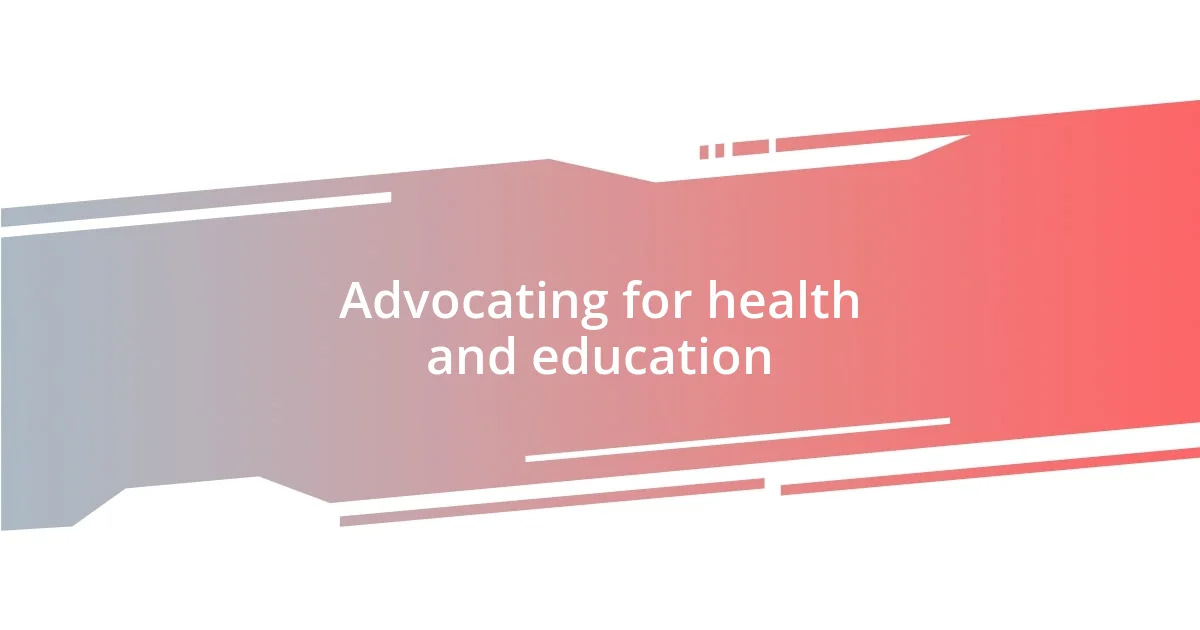
Advocating for health and education
Advocating for health has become an essential part of my parenting journey. I remember attending a school meeting where I had to advocate for my child’s needs. It was nerve-wracking to present my case, but I felt a surge of determination knowing that I was their voice. How could I let miscommunications create barriers? This experience opened my eyes to the importance of being informed about both medical and educational rights, leading me to research and seek out resources that could empower my advocacy efforts.
In addition, I realized that collaboration with educators was vital for my child’s success. One instance stands out: after a frustrating day at school, I approached my child’s teacher for insights. The conversation revealed that we could incorporate specific adaptations that aligned with my child’s learning style. I’ve learned that when teachers and parents come together, it creates a supportive environment that fosters growth. It’s a partnership that not only benefits my child but also enriches the entire classroom experience.
The emotional weight of advocating continuously challenges me, pushing me to stay engaged. I often ask myself, “Am I doing enough?” It’s a reflection that drives me to connect with other parents and share our experiences. In those moments of vulnerability, I find strength knowing we’re all navigating this complex landscape together. Each step I take in advocating not just enhances my child’s journey but also deepens my understanding of the broader challenges facing families like ours. Isn’t it empowering to realize that our voices can spark change in our communities?

